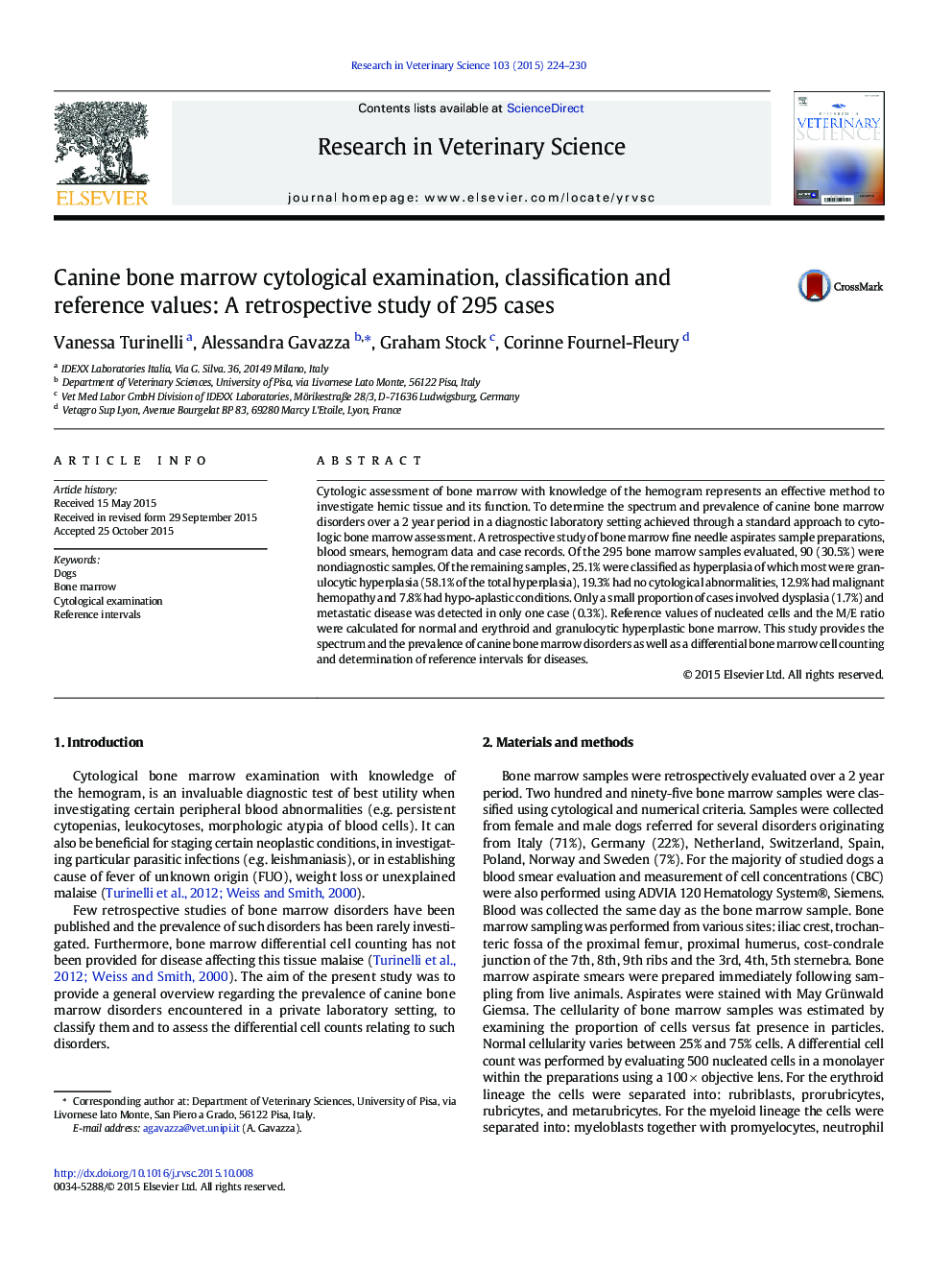| Article ID | Journal | Published Year | Pages | File Type |
|---|---|---|---|---|
| 2454708 | Research in Veterinary Science | 2015 | 7 Pages |
•We perform a morphological and numerical analysis of 295 canine bone marrow samples.•We correlate the alterations in the differential cell count with the pathological states of the bone marrow.•We determine the spectrum and the prevalence of canine bone marrow disorders.•Reference intervals for each disorder are provided.
Cytologic assessment of bone marrow with knowledge of the hemogram represents an effective method to investigate hemic tissue and its function. To determine the spectrum and prevalence of canine bone marrow disorders over a 2 year period in a diagnostic laboratory setting achieved through a standard approach to cytologic bone marrow assessment. A retrospective study of bone marrow fine needle aspirates sample preparations, blood smears, hemogram data and case records. Of the 295 bone marrow samples evaluated, 90 (30.5%) were nondiagnostic samples. Of the remaining samples, 25.1% were classified as hyperplasia of which most were granulocytic hyperplasia (58.1% of the total hyperplasia), 19.3% had no cytological abnormalities, 12.9% had malignant hemopathy and 7.8% had hypo-aplastic conditions. Only a small proportion of cases involved dysplasia (1.7%) and metastatic disease was detected in only one case (0.3%). Reference values of nucleated cells and the M/E ratio were calculated for normal and erythroid and granulocytic hyperplastic bone marrow. This study provides the spectrum and the prevalence of canine bone marrow disorders as well as a differential bone marrow cell counting and determination of reference intervals for diseases.
